This week we held our first webinar. We kept it quiet as we wanted to run it as a pilot. It seemed to go smoothly so we’d like to run it on a regular basis.
Our plan is to have an Introduction to the Thames Path and a series that looks in more detail at different sections. Although the materials are still very much in development, we can announce a schedule on our new page: online events.
All the webinars will be either at 3pm or 7pm and are designed to last around 40 minutes. They are all free. We do hope to meet some of you soon!
The river levels have dropped and all the flood warnings have been downgraded to alerts. There is still a lot of surface water and the Path remains flooded in many places. Much of that has turned to ice as we face the coldest weather in some time. Even some of the locks have frozen.
We mentioned last week that the Environment Agency manage the water levels through the weir system. In a conversation this week with someone at the Agency, it seems that, although this was the policy in the past, the policy now is to open up the weirs during floods to allow the water to flow through as quickly as possible.
Fines of £200 each were handed out by Wiltshire Police to motorists who had travelled from Swindon, just 12 miles away, to the Cotswold Water Park. You have been warned!
Looking ahead, the Thames Path between Mortlake and Barnes Bridge will be closed from May for 6 months. It means that, between Chiswick Bridge and Barnes Bridge, you will need to follow the left bank.
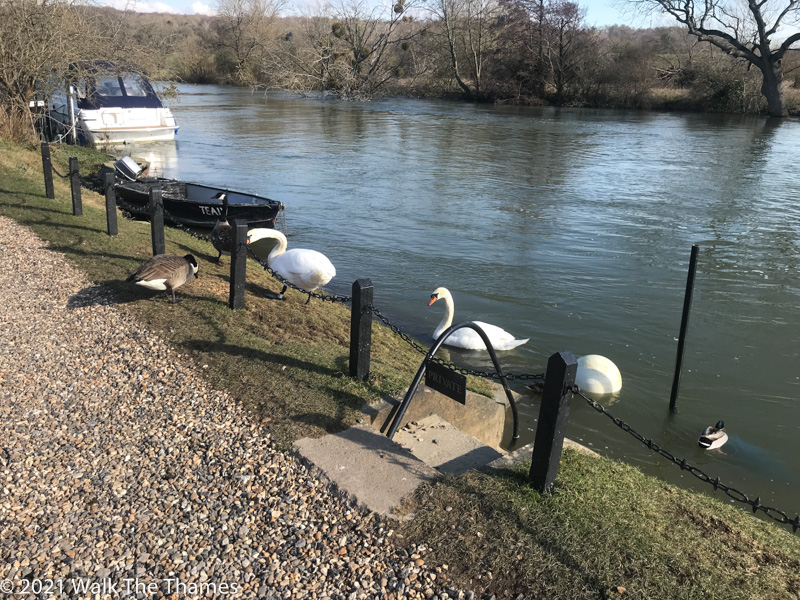
In this week’s series of Ramblings on Radio 4, Clare Balding talks with Anneka Rice as they walk along the Thames Path between Kew Bridge and Barnes Bridge taking in Mortlake and Strand on the Green. In next week’s program, to be broadcast on February 18, Balding will be talking with Berkshire film producer Gareth Ellis-Unwin (The King’s Speech). Judging by the cover photo, which shows Moulsford Railway Bridge, they will be back on the Thames Path.
We reported last week about a swan that had been attached by a dog. Swans were back in the news again this week. Swan Support, who are based in Datchet, rescued a bird that had landed on the Windsor and Eton Bridge with cut feet. Swan Lifeline rescued one that had landed on the busy Windsor Relief Road. Something about Windsor?
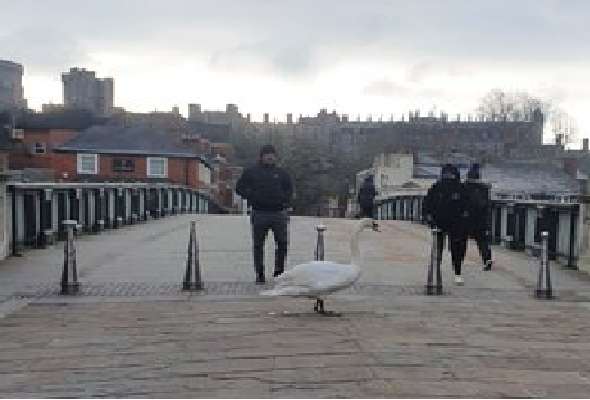
And Cotswolds National Landscape has 100 packets of locally collected wildflower grassland seed to give away. See Twitter for more details
Prior to the current lockdown, we were writing about different sections of the Thames Path. Much of the material was taken from walks taken that very week. Now that we are confined to “walking from home”, we thought we can, at the very least, write about that section of the Path where we live.
Picking up the path from Pangbourne, we follow the right bank of the river. Just opposite is Bozedown Farm, which happens to be the largest Alpaca Farm in the country. Alpacas are from South America and belong to the camel family. Often confused with the larger Llama, they are bred for their fibre. If you look carefully, you will be able to see these animals in the distance.
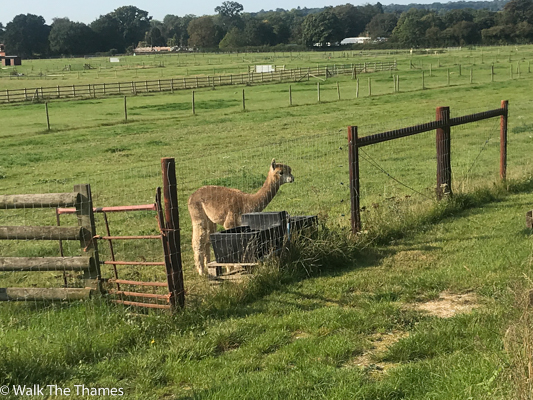
One and a half miles out of Pangbourne, you will see Hardwick House across the river. Hardwick House was built in the early 16th century. It is said that King Charles I played bowls there whilst he was a prisoner in Caversham following the English Civil War.
The house was purchased by Charles Rose at the start of the 20th century. Rose was somewhat of a buccaneer who rode, sailed and flew. Some believe he is the inspiration for Mr Toad in The Wind in the Willows and, therefore, that Hardwick House is, in fact, Toad Hall. Kenneth Grahame lived for a while in Pangbourne. The house is still owned by the Rose family.
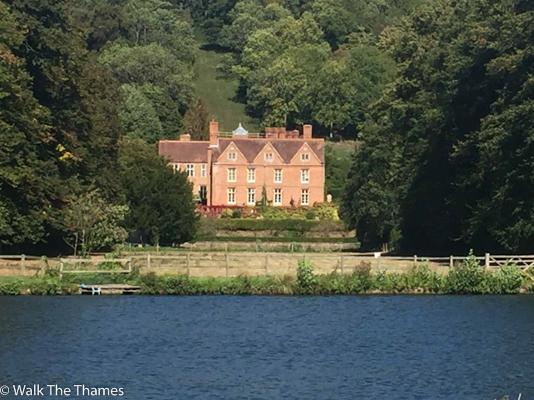
Some say that between Pangbourne and Mapledurham is the best stretch of the entire river. Whilst that might be going a bit far, it is certainly very pretty as you look across the river to the Chiltern Hills. The river here marks the border between Berkshire and Oxfordshire. As you walk, to your right is Springs Farm, now an equestrian centre. On both sides of the river is a thriving community of house boats. Water is provided at Mapledurham Lock. Those houseboats on the left bank must use a small boat to get across for water. The small blue boat pictured below, Bardot, came away from its moorings in the recent floods. It was caught by the weir!
A mile on from Hardwick House and we arrive at Mapledurham Lock. But it is not the lock that is the attraction, pretty though it is with willow trees. Mapledurham House, across the river, is the highlight here.
Mapledurham House is a grand 15th century property built in the traditional shape of an E for Queen Elizabeth, although this is not obvious when seen from the Thames Path. Remarkably the house has remained in the same family, the Blounts, since it was built. The house remained Catholic during the reformation and there are priest holes in the property. There is a Catholic chapel inside the house where services are still held monthly by the local parish in Caversham.
Aside from the historical and architectural interest, the house is famous for two cultural reasons: it was the filming location for The Eagle Has Landed with Michael Caine and Donald Sutherland; and some believe that it, not Hardwick House, is Toad Hall.
Although the house can be visited, it is not particularly accessible as there is no way to cross at Mapledurham. Whilst the house itself is not particularly interesting, the grounds include the water mill which uses an archimedes screw to generate electricity. Those who have watched The Eagle had Landed will be familiar with that water mill.
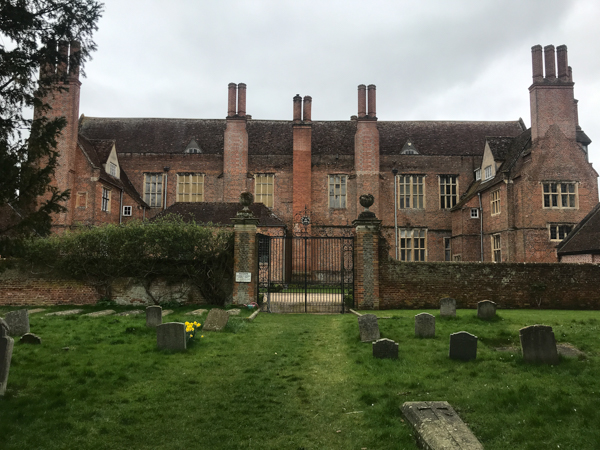
Just past the lock, the Path turns sharply right and away from the river, heading for Purley-on-Thames. This is unfortunate because the best views of Mapledurham House are just a few yards further along the river. We therefore recommend you follow the Mapledurham detour.
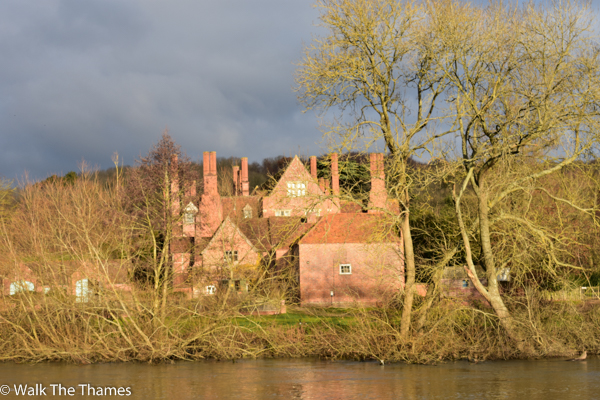
This adds 0.4 miles to your journey but will also take you past the Mad Duck Cafe, the first refreshment stop since leaving Pangbourne. There used to be a cafe at the Lock. However, this closed more than a year ago and has not re-opened.
Purley-on-Thames (let’s just call it Purley – you know where we are!) is an unusual place. During the 1930’s, land by the river was sold to campers at the grand price of £5 per plot. These were bought up by Londoners looking for a weekend retreat who then brought railway carriages onto the plots or constructed cheap wooden huts. Some of these still remain – some in better condition than others!
As mentioned above, the Thames Path leaves the river at Mapledurham to head through the village. Unfortunately it does not rejoin the river for a further mile as, in days goneby, the local farmer refused permission for a towpath to run through his land. The towpath switched to the other side, courtesy of a ferry, as far as Tilehurst. To this day, there is still no right of way between the end of Purley and Tilehurst. If you look on the OS map you will see a 1/4 mile long path on the opposite side of the river that goes nowhere!
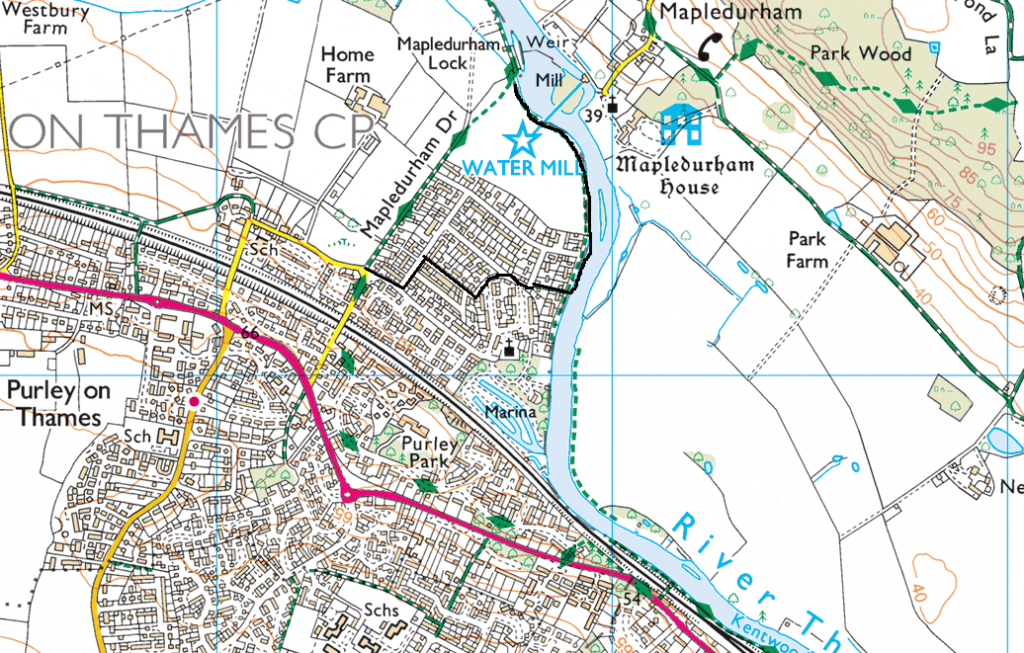
So, instead of following the river, the Path goes up a hill (the second of only two hills on the Thames Path, the first being between Goring and Pangbourne), over the Great Western Railway, through a housing estate and some woods, to emerge onto the busy A329 where Tilehurst starts.
You stay on the A329 for just a few yards until you reach the Roebuck, a former pub, where the Path drops steeply back over the railway line and down to the river. The Roebuck, were it still open, would have been the first pub since Pangbourne, there being no pubs in Purley – a fact that locals attribute to the land being previously owned by Quakers – although there is nothing historical to support that argument. The Roebuck would have been a fine hotel in its time, affording dramatic views across the river. It is one of the finest vistas on all of the Thames Path.
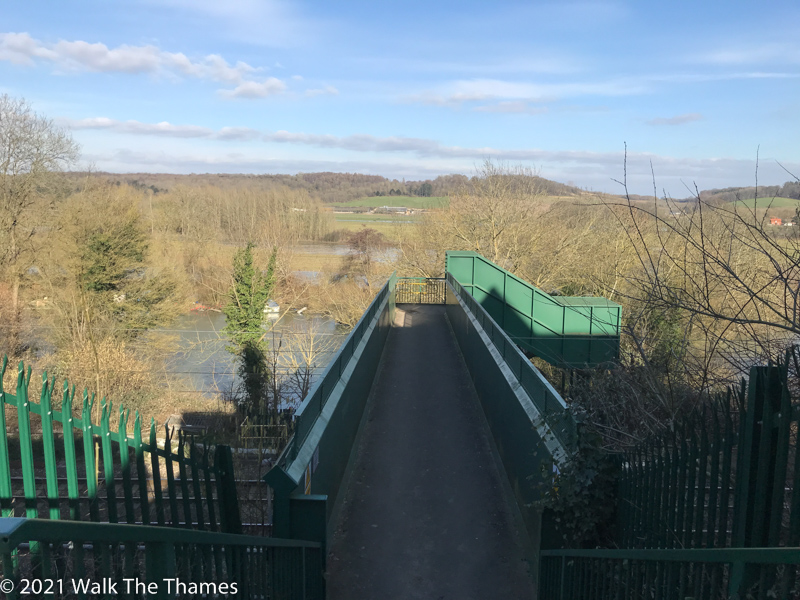
At the bottom, the Path follows the river to the right. You can, in fact, walk a short distance to your left upstream. But the path ends abruptly at Roebuck Ferry Cottage where, as explained above, the towpath previously switched sides.
We’ll leave it there and pick it up next week where we should reach Reading.
Bye for now.
Ready to book?
| Cookie | Duration | Description |
|---|---|---|
| cookielawinfo-checkbox-analytics | 11 months | This cookie is set by GDPR Cookie Consent plugin. The cookie is used to store the user consent for the cookies in the category "Analytics". |
| cookielawinfo-checkbox-functional | 11 months | The cookie is set by GDPR cookie consent to record the user consent for the cookies in the category "Functional". |
| cookielawinfo-checkbox-necessary | 11 months | This cookie is set by GDPR Cookie Consent plugin. The cookies is used to store the user consent for the cookies in the category "Necessary". |
| cookielawinfo-checkbox-others | 11 months | This cookie is set by GDPR Cookie Consent plugin. The cookie is used to store the user consent for the cookies in the category "Other. |
| cookielawinfo-checkbox-performance | 11 months | This cookie is set by GDPR Cookie Consent plugin. The cookie is used to store the user consent for the cookies in the category "Performance". |
| viewed_cookie_policy | 11 months | The cookie is set by the GDPR Cookie Consent plugin and is used to store whether or not user has consented to the use of cookies. It does not store any personal data. |